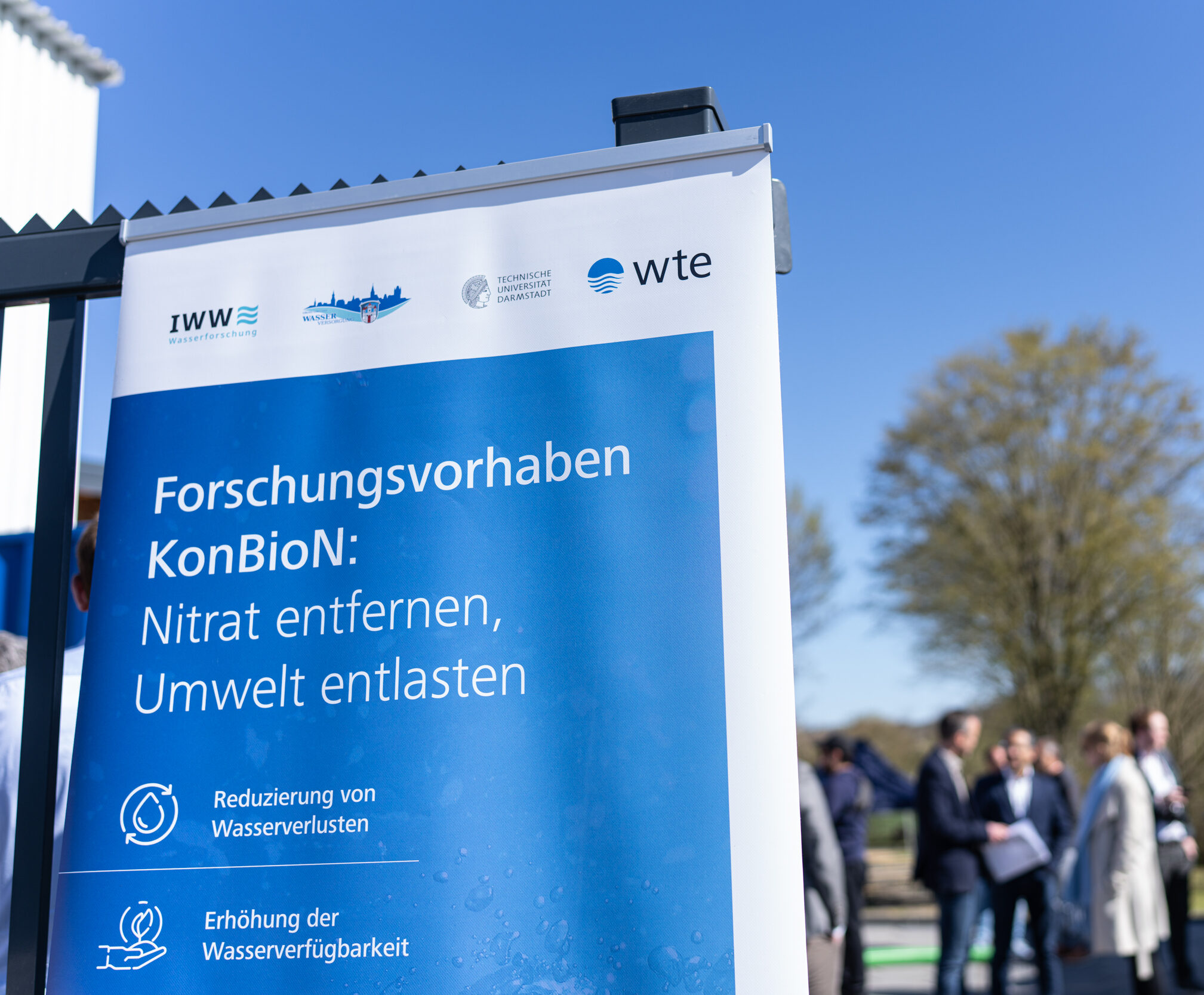
Published on:

On the 7th of April 2025, a symbol was set in Groß-Umstadt in the German state of Hessen – for innovation, responsibility and a safe supply of drinking water.
Representatives from science, business and politics met at the press event to mark the launch of the KonBioN research project.
The Hessenschau TV report summarises the day in two minutes – and shows that KonBioN/NERO is a moving topic.
Trinkwasseraufbereitung – Forschungsprojekt in Groß-Umstadt – Video | hessenschau.de | TV-Sendung
Brief introduction: What is it all about?
In Germany, 70 per cent of drinking water is obtained from groundwater and spring water. But this is under pressure because the nitrate content is rising – mainly due to anthropogenic inputs. One solution for improving the quality of drinking water is the use of reverse osmosis, which reliably filters out most dissolved substances from drinking water and thus ensures clean drinking water. Unfortunately, however, this process leaves behind heavily contaminated wastewater (concentrate).
This is precisely where the KonBioN research project comes in – with the innovative NERO reactor from WTE Wassertechnik GmbH. Through the interplay of good engineering and biology, the NERO reactor reliably removes nitrate from the wastewater stream.
The system is now technically advanced and tried and tested in practice: It has already proved successful in Obersiebenbrunn (Austria) and at the WTE research centre in Hecklingen. It is now being used at the Groß-Umstadt drinking water plant to once again test various load scenarios under real conditions.
The DVGW-funded project is an interdisciplinary collaboration: in addition to the town of Groß-Umstadt and WTE Wassertechnik GmbH, the TU Darmstadt and the IWW are also involved. Together, they are researching whether the treated wastewater can be reintegrated into the water cycle – a decisive step towards a circular economy and sustainability for the precious resource of water.
The demonstration phase will run until 2027. The aim is to sound out the system’s load limits and further develop the viable model for large-scale application.
And the best thing is: the story has only just begun!
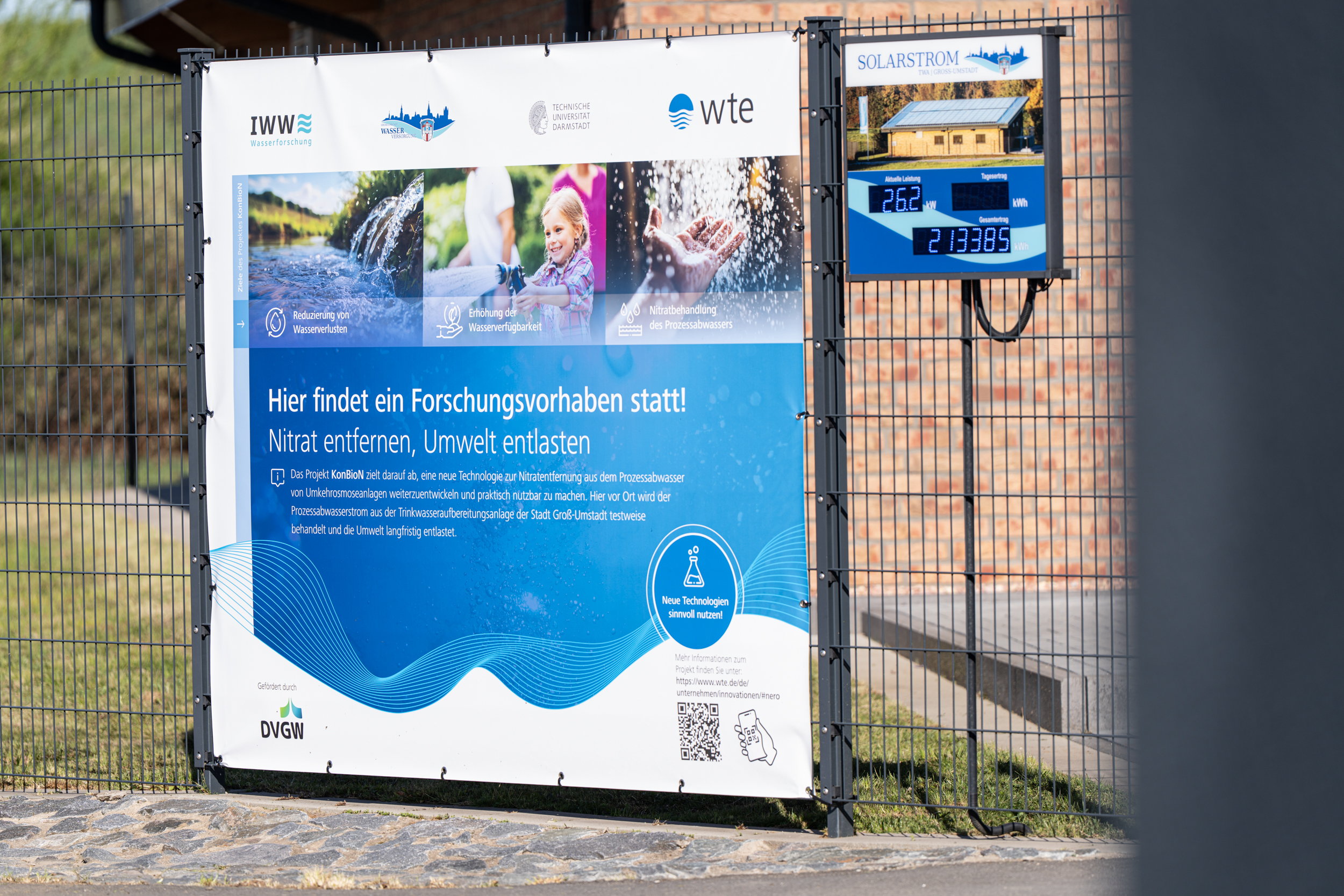
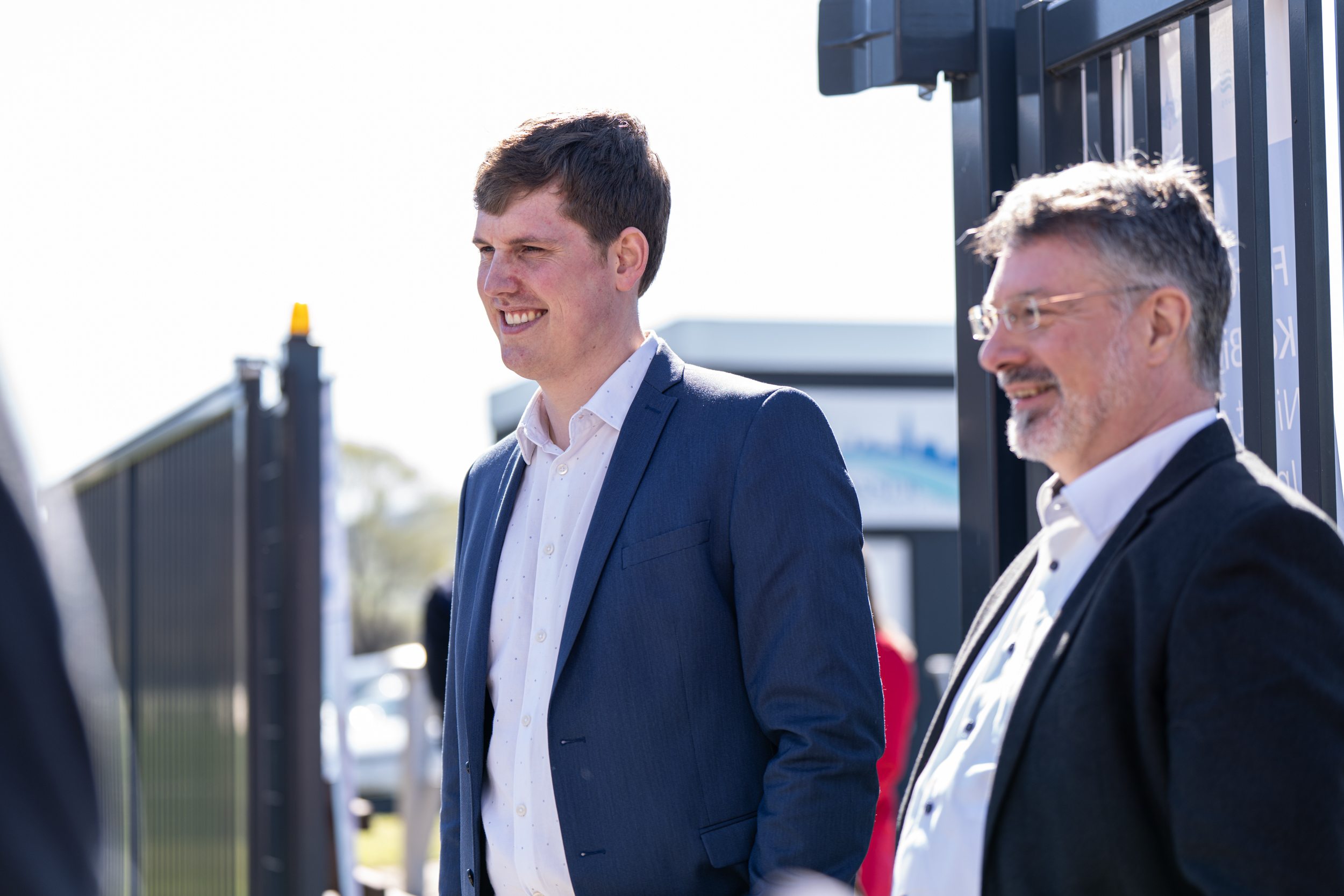
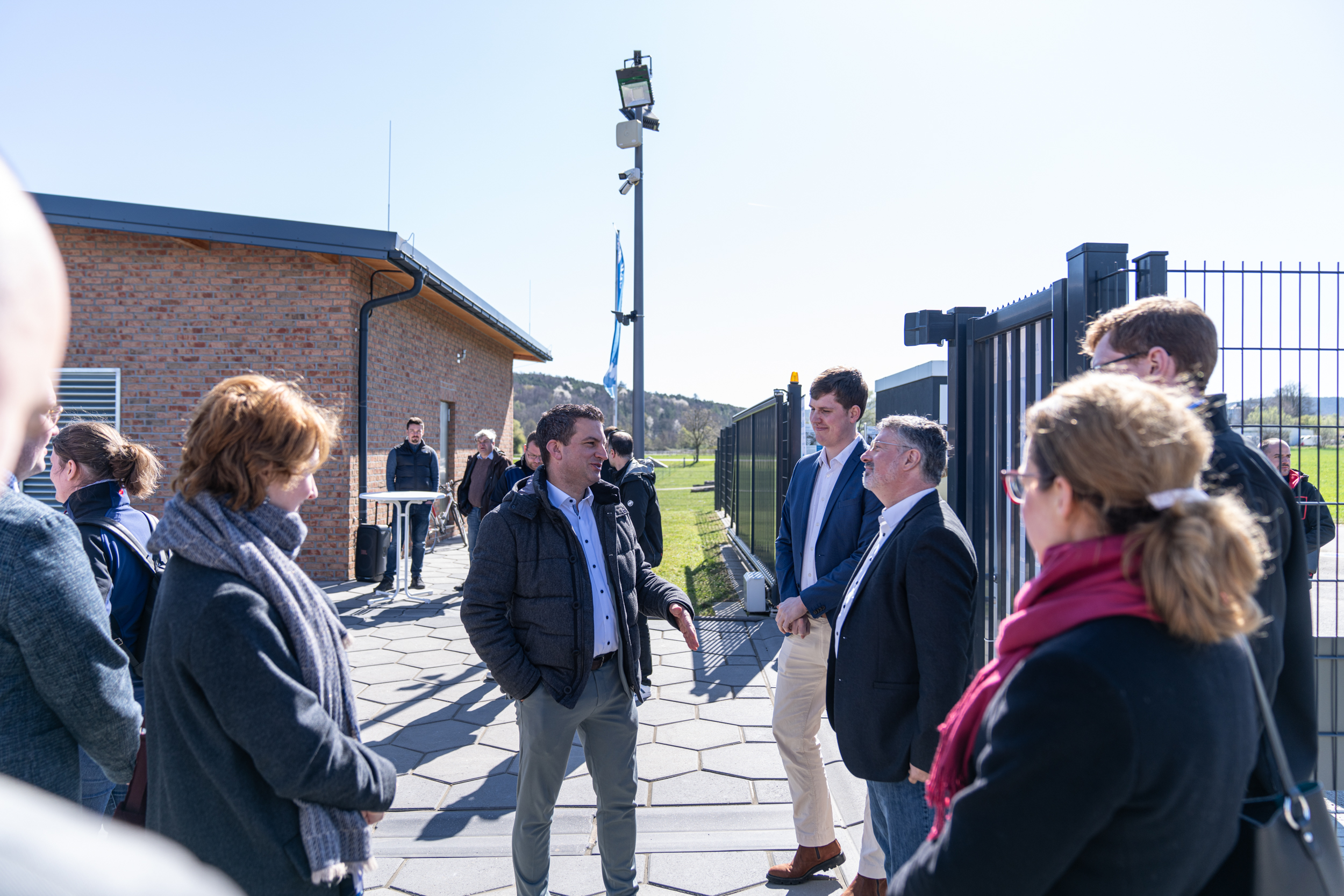
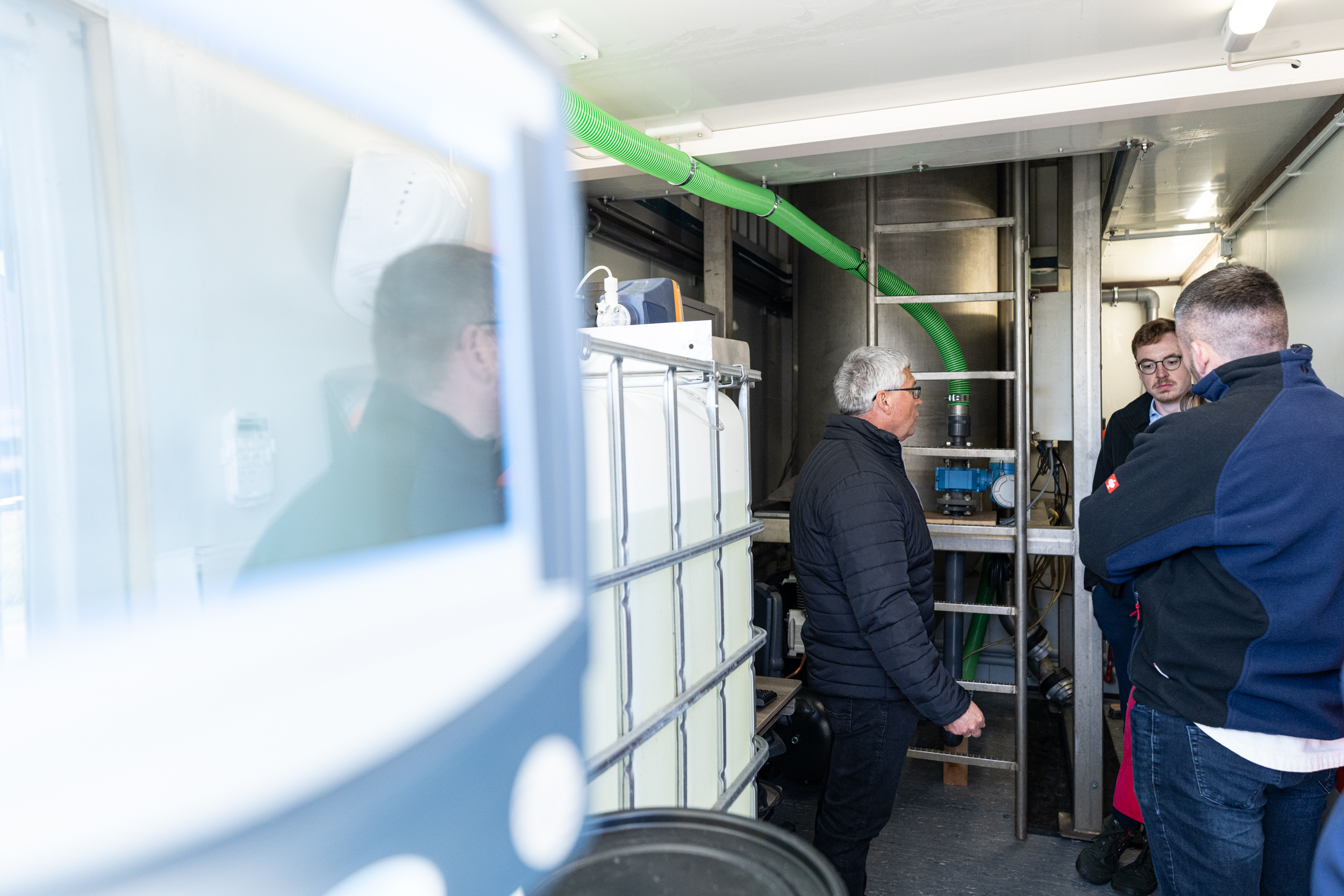
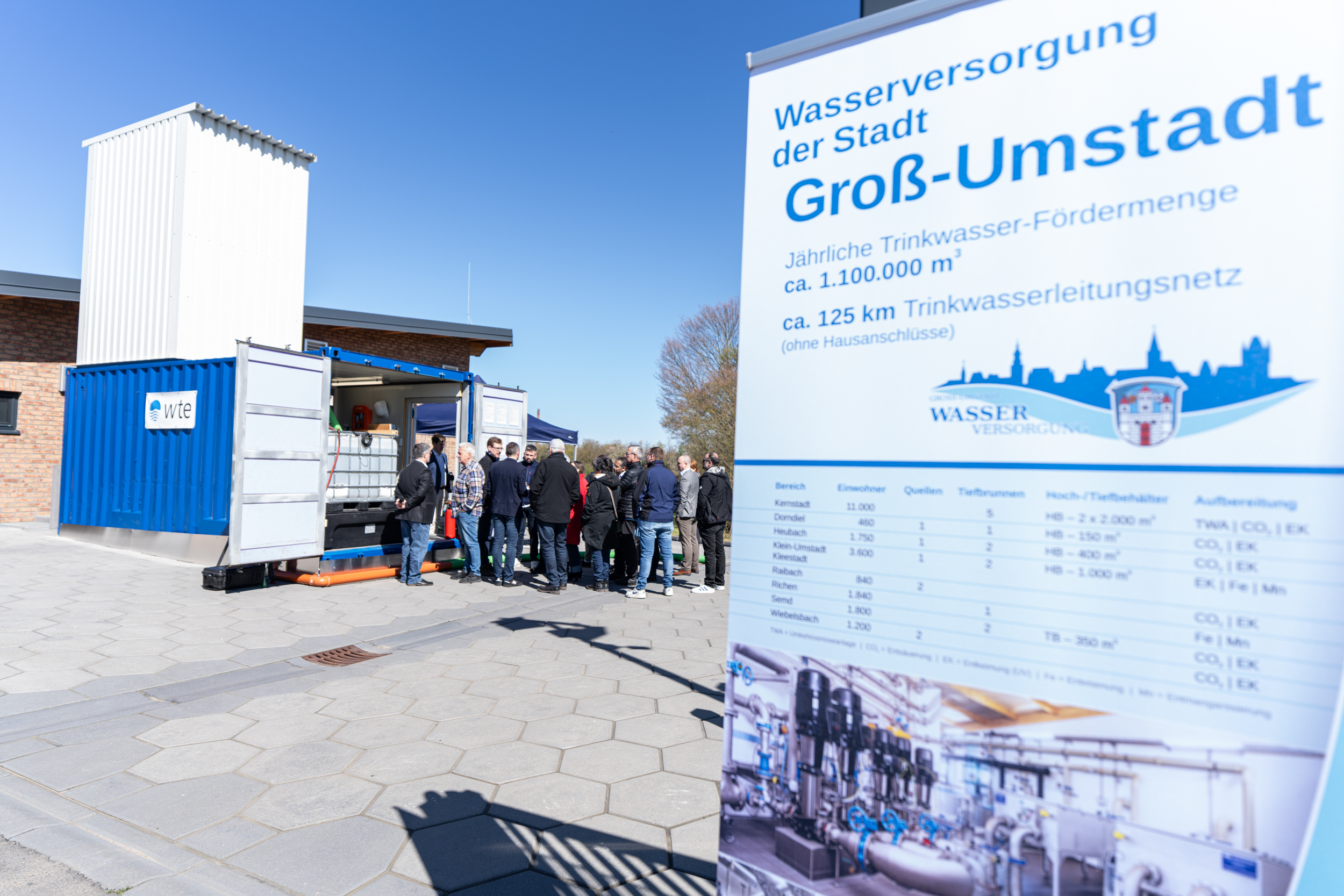
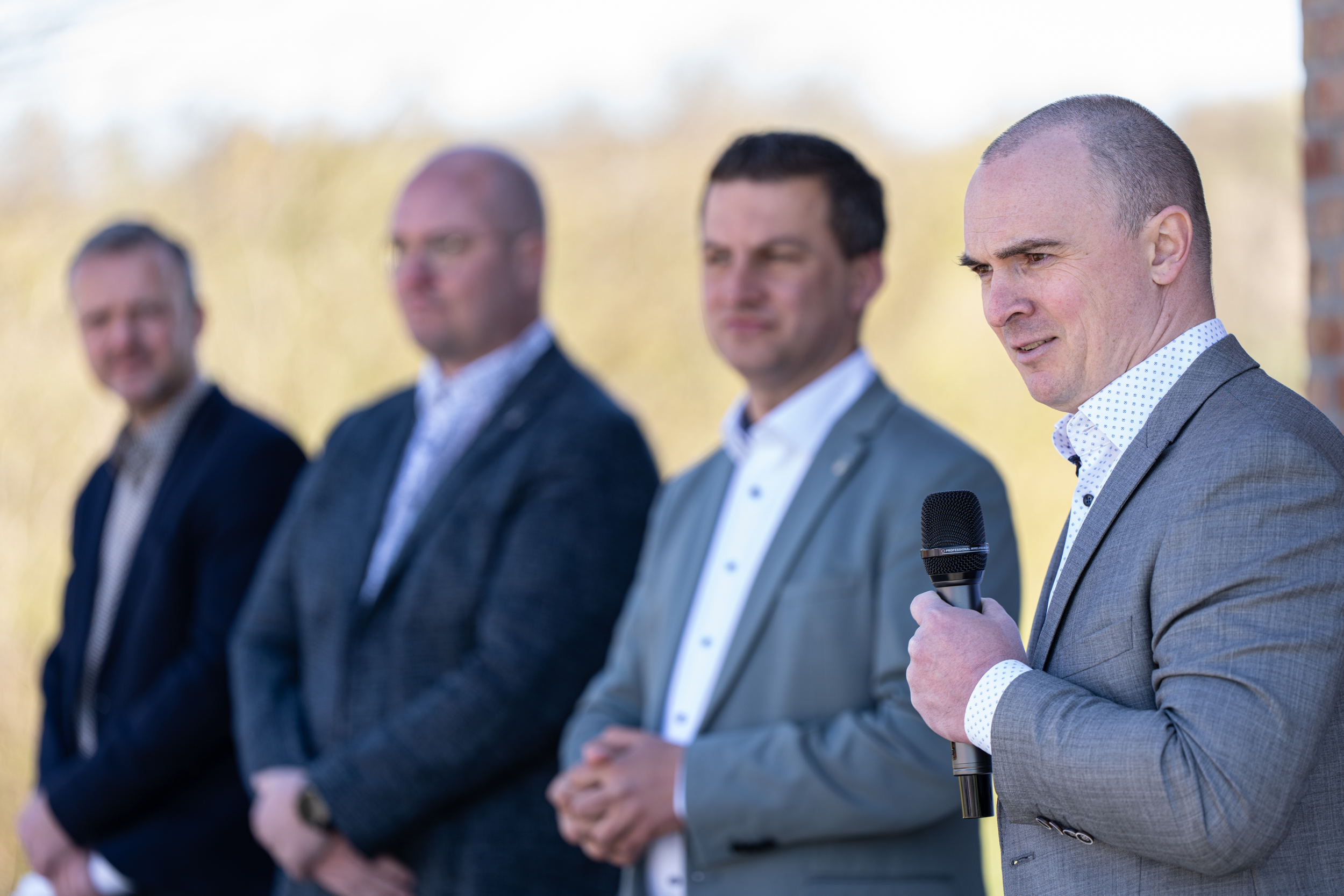
03/18/2025
Milestone for drinking water: Cluj projects approach the finish line01/22/2024
Successful commissioning of the new plant in Umm Al Hayman10/23/2024
Double award for Umm Al Hayman: WTE shines at the Asian Water Awards 202407/19/2024
IWA LET 2024 in Essen: Successful home match for WTE04/23/2024
Umm Al Hayman wins 2nd prize03/22/2024
WTE celebrates World Water Day 2024